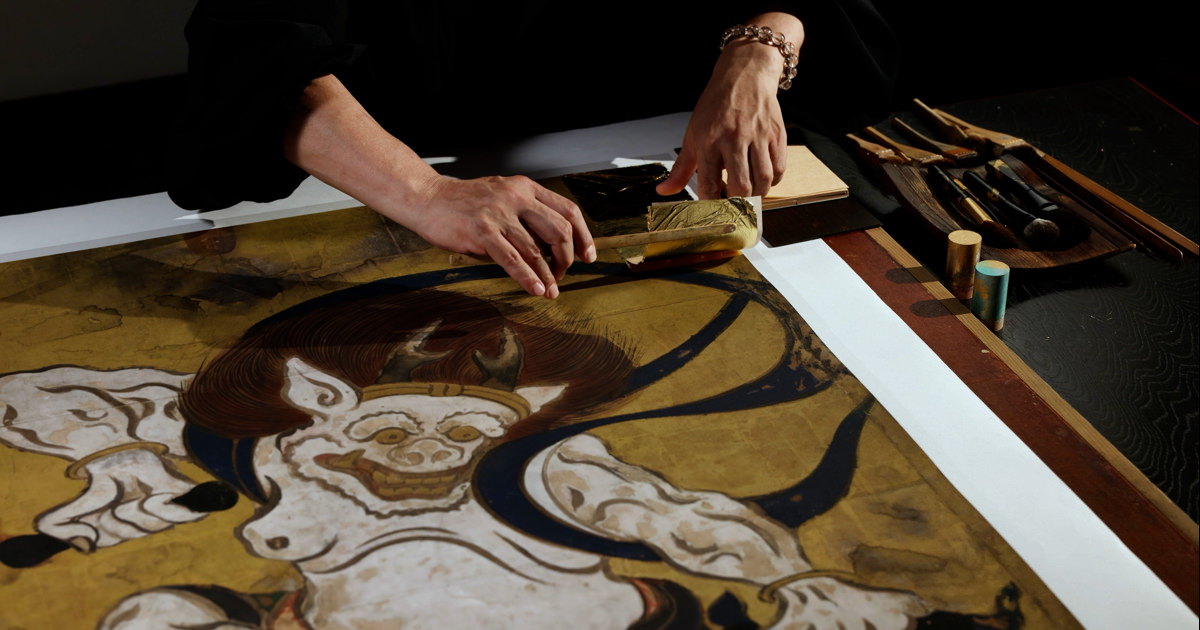These images are based on the high resolution facsimile produced by the Tsuzuri Project. Unauthorized copying, duplication, or transfer of these images is strictly prohibited.
Landscapes
High-resolution facsimiles
- Material
- printed, mica on washi paper
- Period of creation
- Tsuzuri Project Stage 3 2009–2010
- Recipient
- Entokuin Temple
Original
- Cultural property designation
- Important Cultural Property
- Artist
- Hasegawa Tohaku
- Historical era
- Azuchi-Momoyama (16th century)
- Material
- ink, mica on karakami paper
- Medium
- 32 sliding doors
- Size
- Each door H177.0 × W93.9 cm
- Collection
- Entokuin Temple
Description
These sliding doors were originally located in Sangenin, of the Daitokuji Temple. 32 doors were transferred to Entokuin, of the Kodaiji Temple. Hasegawa Tohaku is believed to have painted this when he was 51 (1589), the year the Sangenin was erected. Tohaku, who failed to receive permission to paint these doors from Shunoku Soen, founder of the Sangenin, visited the temple when the founder was absent and completed all paintings at once, disobeying the orders of those around him. This work is rare in that it is painted on paper pre-printed with Paulownia flower patterns in isinglass. The flower pattern appears like large snowflakes, thus transforming an otherwise simple scene into a wintry scene of spectacular scale. It is the work of Tohaku as he is about to reach his prime, who later poses a threat to the Kano school. Four of the doors were created and contributed during Stage 3 of the Tsuzuri Project. Later in October 2010, the remaining 28 doors were created and contributed to Kodaiji with the cooperation of the Kanazawa International Culture & Communication Institute.



